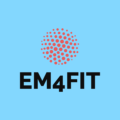By Associate Professor Dr.phil.habil. Klarissa Lueg
This report outlines the comprehensive range of activities undertaken during my secondment to Spain, from 4-18 February and 11-25 October 2023.
The visit aimed to foster academic and in-practice collaboration and knowledge exchange, explore existing and potential hindrances and drivers for sustainable entrepreneurship and management from the perspective of entrepreneurs, as well as identify ideas and best practice inspiration for university entrepreneurship education and promotion.
The first part of my stay was focused on learning about the activities of Tetuan Valley in Madrid, a non-for-profit pre-accelerator program and Google for Startup partner. Tetuan Valley, as physical representation and hub for entrepreneurs and entrepreneurship gains scholarly significance not only from a management research perspective, but also from a sociomaterial perspective: though activities are highly digitalized, this hub remains as an innovative physical meeting point. A sociomaterial perspective is interested in how the material environment is intertwined with the social world and how it impacts behavior and morale of humans. Sociomateriality (Orlikowski, 2000) means material artefacts becoming entangled with social meaning and action. Presence and design of material (e.g., colors, furniture) have a social meaning that is being (re)produced in discursive practices with humans. Humans are equally co-constructed: Hultin et al. (Hultin, 2019; Hultin & Introna, 2019; Hultin & Mähring, 2017) describe human actions as being co-constructed by the material and the discursive. Consequently, material conditions (e.g., glass or solid doors, instructive signage) signal to humans which actions and behaviors are considered valuable and legitimate. Therefore, materiality can be considered constitutive for how humans are able to act in an entrepreneurial and business setting. At Tetuan Valley, sustainability, as a theme, is clearly salient in the material environment: lots of green wall decoration remind entrepreneurs of a green mission, but the signage is much less subtle: ‘sustainability’ can be found printed on various prominent pieces of signage, e.g., on courses relating to growth and sustainability. Equally, social sustainability is discussed by citing, centrally positioned, impact data from the Spanish google for startups community in Spain (e.g., percentage of women founders).
Equally during this first part of my secondment, I worked on the concept of “corporate heritage” and how this conceptual notion could possibly extend and apply to startups and / or younger, small companies in general. I conclude in the generated publications[i] that corporate heritage communication is by no means an exclusive measure for established and traditional companies. It can be an equally suitable instrument for up and coming start-ups that aim at incorporating transparent and reliable heritage communication as part of their social sustainability program.
For the second half of this secondment I decided to move on to Valencia in order to conduct face-to-face interviews with entrepreneurs, and to visit the spin-off and start-up facilities at the science park of UPV Universitat Politècnica de València: the science park is a giant company-university cooperation with over 50 research units and over 40 companies residing here. The university has assisted in, and provided scaffolding and infrastructure to, numerous companies that have a proclaimed focus on sustainability, especially with a view to environmental sustainability and solving large scale, contemporary human problems. From here, I was able to get in touch with entrepreneurs that had or are currently developing their business in cooperation with UPV. I was able to start interviewing and to collect further contacts for upcoming secondments and the contingent further data gathering (snowball sampling).
In general, the secondment has allowed to expand on my conceptual considerations of how young companies can relate to corporate heritage as a means of social sustainability communication, to learn and to exchange knowledge, to gather data by interviewing and sociomaterial observation and to make contacts for future sampling and data gathering.
[i] Lueg, K. (2023). Corporate Heritage and Social Sustainability: the role businesses can (and should) play in maintaining heritage and culture. In K. Lueg, & S. Jebsen (Eds.), Social Sustainability and Good Work in Organizations Taylor & Francis.
Lueg, K. (2023). Organisational History and Heritage. In M. Godwyn, E. Swartz, M. Grothe-Hammer, & S. O. Idowu (Eds.), Elgar Encyclopedia of Organizational Sociology Edward Elgar Publishing.
